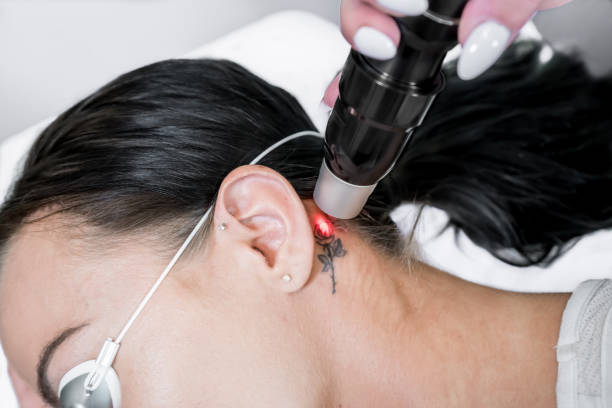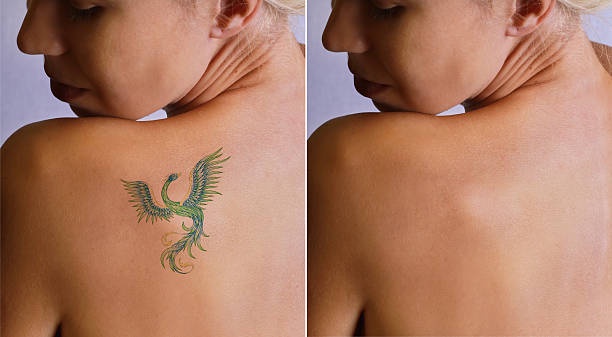Tattoos have been a form of self-expression for centuries, but as personal tastes change and life circumstances evolve, the desire to remove a tattoo has become increasingly common. Fortunately, advancements in technology have provided a more effective and less invasive solution: Laser Tattoo Removal. This innovative procedure has revolutionized the way individuals can unink their canvas, offering a safer and more efficient alternative to traditional methods.
Understanding Laser Tattoo Removal
Laser Tattoo Removal is a non-invasive procedure that employs the power of laser technology to break down tattoo ink particles embedded in the skin. The process involves directing high-intensity laser beams onto the tattooed area, causing the ink to fragment into smaller particles. These smaller particles are then naturally eliminated by the body's immune system over time. The effectiveness of Laser Tattoo Removal lies in its ability to specifically target the ink without causing significant damage to the surrounding skin.

The Mechanism Behind Laser Tattoo Removal
The success of Laser Tattoo Removal lies in the principle of selective photothermolysis. Different tattoo pigments absorb specific wavelengths of light, and lasers can be calibrated to emit these wavelengths. When the laser light interacts with the tattoo ink, it is absorbed, causing the ink particles to heat up and break down into smaller fragments. The body's immune system recognizes these fragments as foreign bodies and gradually eliminates them through the lymphatic system.
Benefits of Laser Tattoo Removal
-
Precision: Laser Tattoo Removal allows for precise targeting of the tattooed area, minimizing damage to surrounding skin. This precision is particularly crucial for intricate and detailed tattoos.
-
Minimal Scarring: Compared to traditional tattoo removal methods, such as excision or dermabrasion, Laser Tattoo Removal significantly reduces the risk of scarring. The controlled laser energy selectively targets the ink without causing extensive damage to the skin.
-
Versatility: Laser technology can effectively remove tattoos of various colors and sizes. Different lasers are used for specific colors, ensuring a comprehensive approach to tattoo removal.
-
Less Discomfort: While some discomfort is inevitable, Laser Tattoo Removal is generally less painful than alternative methods. Many clinics also use topical anesthetics to minimize patient discomfort during the procedure.
-
Quicker Recovery: Laser Tattoo Removal typically has a shorter recovery period compared to other methods. Patients can resume their daily activities shortly after the procedure with minimal downtime.
The Laser Tattoo Removal Process
-
Consultation: The process begins with a thorough consultation to assess the tattoo's size, color, and location, as well as the patient's overall health. This allows the practitioner to determine the appropriate laser settings for optimal results.
-
Protective Measures: Prior to the procedure, the patient's eyes are shielded with protective goggles, and the tattooed area is cleansed. A topical anesthetic may be applied to numb the skin and enhance the patient's comfort.
-
Laser Treatment: The laser is then directed at the tattooed area, emitting short pulses of high-intensity light. The duration of the procedure varies depending on factors such as the tattoo's size, color, and depth.
-
Post-Treatment Care: After the session, the treated area may be covered with a bandage, and the patient is given specific instructions on post-treatment care. This often includes keeping the area clean, avoiding sun exposure, and applying recommended ointments.
Factors Influencing Laser Tattoo Removal
Several factors can influence the success of Laser Tattoo Removal:
-
Ink Color: Darker colors, such as black and blue, are generally more responsive to laser treatment. Lighter colors like yellow and green may require additional sessions and specialized lasers.
-
Skin Type: The patient's skin type plays a role in the procedure's success. Darker skin tones may be more prone to pigmentation changes, and practitioners must adjust laser settings accordingly.
-
Tattoo Age and Depth: Older tattoos are often easier to remove than fresher ones. The depth of the tattoo also affects the number of sessions required for complete removal.
-
Health and Lifestyle: A patient's overall health and lifestyle can impact the healing process. Non-smokers, for example, tend to experience better results.
Conclusion
Laser Tattoo Removal has emerged as a transformative solution for those seeking to part ways with their inked past. The precision, minimal scarring, and versatility of this technology make it a preferred choice for many individuals. As technology continues to advance, it is likely that Laser Tattoo Removal will become even more accessible, efficient, and accommodating to a broader range of tattoo types.
The decision to undergo Laser Tattoo Removal is a personal one, influenced by factors such as the desire for change, career considerations, or evolving tastes. Regardless of the motivation, individuals exploring this option can take solace in the fact that uninking the canvas has never been more feasible, thanks to the remarkable strides made in laser technology.


No comments yet